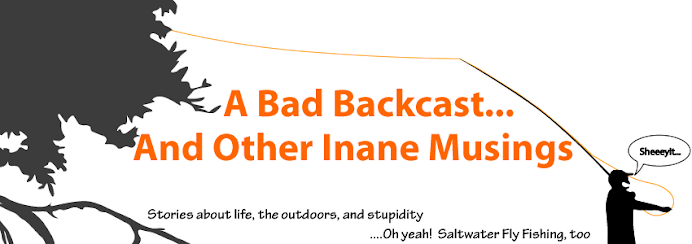
In this installment of Scouting New Spots, we'll combine the things that we learned from the first post - Where? - and try to determine when is the best times to fish and how it goes hand in hand with where.
For starters, you need to understand that I'm not a marine biologist or expert on the subject of finding fish. All I'm doing here is passing on things that I've learned in the hopes of helping other people find fish on more of a consistent basis....I'm always learning new things too. This year, I've really been putting an effort into being able to find fish.
Now...when the best times to fish is an oft debated subject. Some say the best time to go is low tide, others will tell you high tide, and of course, the incoming or outgoing tide is thrown in there as well. Going at night or the break of dawn?
I've found through trial and error that fish can be caught at all stages of the tide, night and day...you just have to know where to fish.
At my special little oyster bar spot, there's an oyster bar on the edge of a drop off that backs up onto a lush shallow grass flat. My favorite time to fish this spot is at a dead low tide with the sun low in the sky. The flat is almost totally dry, but the water leading up to it and around the oyster bar can hold fish. This area just comes alive at this time, with little shrimp, fish and crabs coming out of their hiding places. I've witnessed redfish stacking up on the edge of this flat, working their way into the grass as soon as the water is deep enough to hold them.
In the wintertime, I've seen redfish at the lowest stage of the tide, holding in pools of water with the surrounding areas completely dry, waiting for the tide to come in. A deftly placed shrimp or crab pattern will be sure to draw interest in a situation like this.
Snook, on the other hand, are notorious nocturnal feeders. The Mad Snooker, Captain Dave Pomerleau can attest to this fact. I can't tell you how many times I've seen these fish cruising along a mangrove shoreline or hanging around a boat dock, thrown everything I can at them and either spook them or they refuse EVERYTHING. You'd think they either never eat, or are smarter than your average fish.
Truth be told, they DO eat, but at certain times...and only for a short time. I have yet to figure out the formula, but they DO prefer an incoming tide at night. Lighted boat docks with moving water is what to look for. They hold in the shadows, waiting for baitfish to be swept along in the current where they can dart out and grab one.
Flooding tides give gamefish the opportunity to catch prey among the mangrove prop roots. A deep mangrove edge should be explored at this stage of the tide. If you're not hanging up on prop roots or branches once in a while, you're not casting close enough.
But what do you do along the mangroves on a falling tide? A lot of large mangrove islands have "creeks" that, if you were looking at it on Bing Maps, you'd swear it was a checker board. These are breaks to allow for tide and current flows, since the mangroves are in the middle of a current, these creeks allow the mangroves to stay put and not be swept away. Where these creeks empty out, there is often a depression or hole. Fish like to wait in and around these holes on a falling tide to feed on the prey items that are swept out when the water level drops. This is a great spot to find any of the big three year round. Combine this with a low light situation, and the fishy fireworks can be intense.
Another spot that I found that holds fish no matter the time of day or tide stage is a sand flat that drops off into a channel. The edge of this channel is grassy. What I like to do is bounce a black and purple bendback down the hill as it were.
But why does this spot always seem to produce trout?
A few reasons to consider. The temperature of the deeper water makes the fish a bit more comfortable, the eyes of the fish are sensitive to bright light and on a hot summers day, cool darker water seems to be preferable to these fish. There always seems to be moving water along this edge and trout like to lie in wait to pounce on unsuspecting prey items washed to them in the current...tide changes from incoming to outgoing, they just turn around.
So any stage of the tide and time of day should find you still able to find fish, you just need to know where to look and at which time.
+Bigmouth.png)
